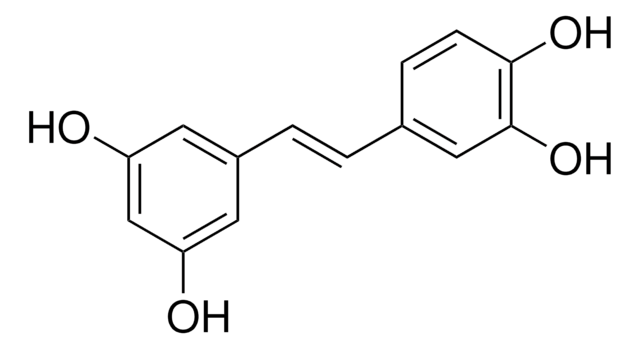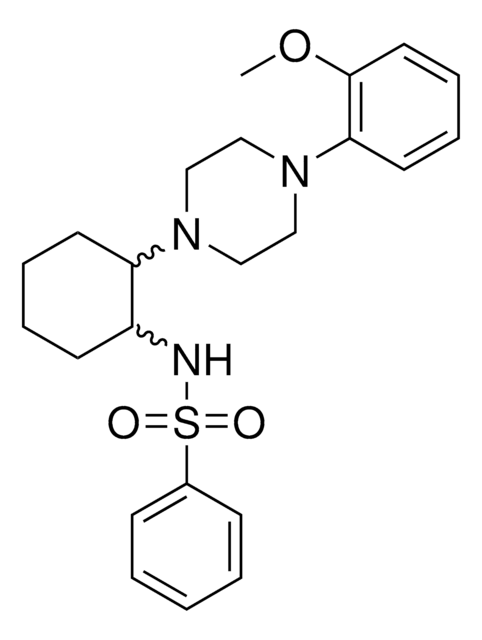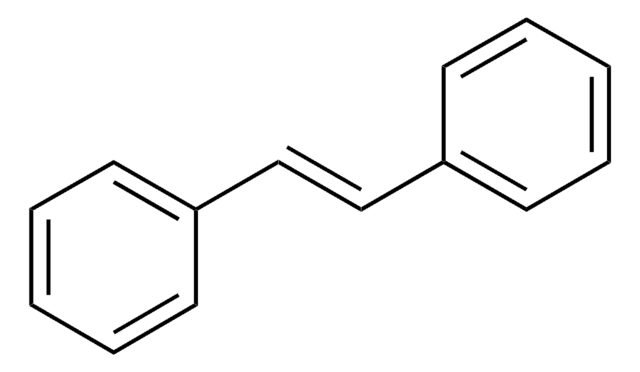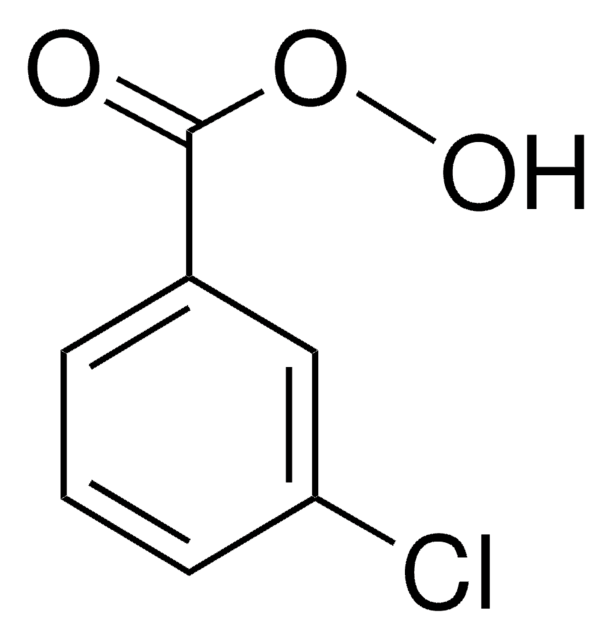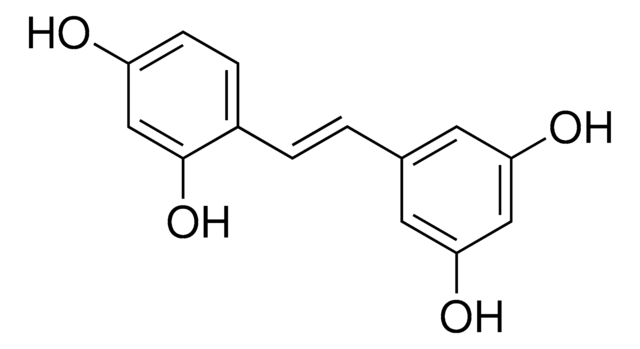SML0384
Eicosapentaenoyl ethanolamide
5 mg/mL in absolute ethanol, ≥98% (HPLC)
Sinónimos:
(5Z,8Z,11Z,14Z,17Z)-N-(2-Hydroxyethyl)-5,8,11,14,17-eicosapentaenamide, EPEA
About This Item
Productos recomendados
Quality Level
assay
≥98% (HPLC)
form
solution
drug control
regulated under CDSA - not available from Sigma-Aldrich Canada
storage condition
protect from light
under inert gas
concentration
5 mg/mL in absolute ethanol
color
light yellow
storage temp.
−20°C
SMILES string
CC\C=C/C\C=C/C\C=C/C\C=C/C\C=C/CCCC(=O)NCCO
InChI
1S/C22H35NO2/c1-2-3-4-5-6-7-8-9-10-11-12-13-14-15-16-17-18-19-22(25)23-20-21-24/h3-4,6-7,9-10,12-13,15-16,24H,2,5,8,11,14,17-21H2,1H3,(H,23,25)/b4-3-,7-6-,10-9-,13-12-,16-15-
InChI key
OVKKNJPJQKTXIT-JLNKQSITSA-N
Biochem/physiol Actions
Other Notes
Storage Class
10 - Combustible liquids
wgk_germany
WGK 3
flash_point_f
Not applicable
flash_point_c
Not applicable
Elija entre una de las versiones más recientes:
Certificados de análisis (COA)
¿No ve la versión correcta?
Si necesita una versión concreta, puede buscar un certificado específico por el número de lote.
¿Ya tiene este producto?
Encuentre la documentación para los productos que ha comprado recientemente en la Biblioteca de documentos.
Nuestro equipo de científicos tiene experiencia en todas las áreas de investigación: Ciencias de la vida, Ciencia de los materiales, Síntesis química, Cromatografía, Analítica y muchas otras.
Póngase en contacto con el Servicio técnico


